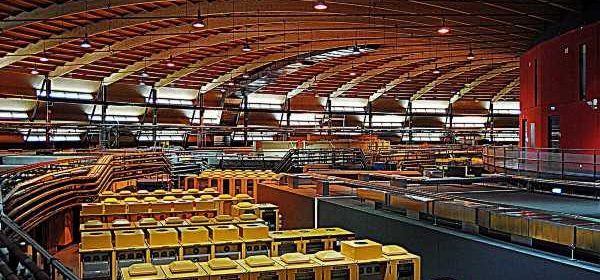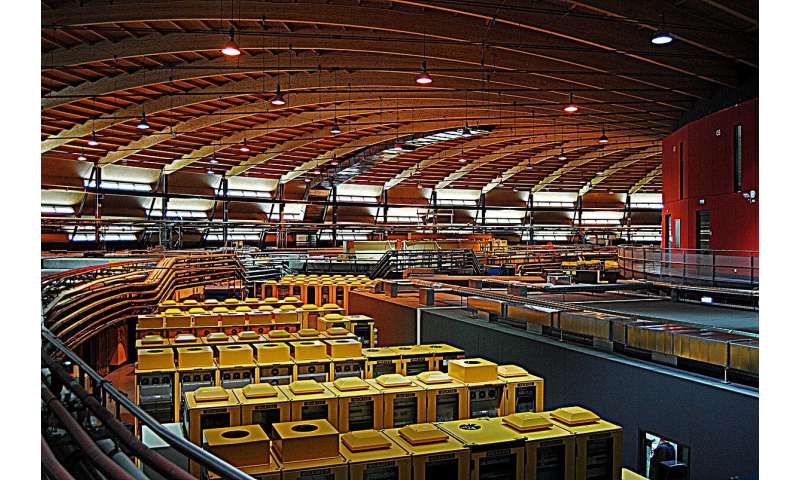New wave of medical ‘deep tech’ can help coronavirus response – but there’s resistance

The development of new medical technologies based on cutting-edge discoveries has accelerated during the coronavirus pandemic and is helping us respond to the health crisis. But for these technologies to flourish, attitudes and scepticism among investors still need to change, say researchers and start-ups.
‘Deep tech’ describes companies working with technologies such as advanced material science, artificial intelligence or biotech to bring completely new scientific discoveries or engineering breakthroughs to businesses. For example, deep tech includes pharmaceutical companies using the ultra-fast processing power of quantum computers to simulate complex chemical reactions to discover new drugs, or using artificial intelligence and machine learning to build navigation systems for self-driving cars.
Deep tech is often based on ‘fundamental’ research driven by scientific curiosity about new, untested theories—rather than ‘applied’ research, which improves existing technology.
Although the term is new, the approach has been around for decades, says Jonathan Wareham, a Professor of Information Systems at the ESADE Business School in Barcelona, Spain.
‘History has given us many examples of how deep technologies have diffused into clinical products or medicines that have been tremendously helpful,’ he said. He gives the example of how Paul Dirac’s theory of antimatter evolved from a theory that even Dirac didn’t believe to being the science behind modern PET scanners.
New wave
As the coronavirus spread through Europe in early 2020, many deep tech companies adapted their technology to help with the response.
Prof. Wareham is part of the ATTRACT project which oversees nearly 170 deep tech projects to help them reach investors. He believes that a new wave of medical technology based on fundamental research can readily respond to the pandemic.
An example of this is Galactica Biotech, an Irish company using machine learning to help small pharmaceutical companies find new uses for their medical molecules. Since the molecules are already approved for medical use, new drugs based on the molecules are often approved faster. They are now working with companies to look for molecules that could create coronavirus treatments.
Galactica has experience in this area, having used their artificial intelligence algorithm during the 2014 Ebola outbreak to search for possible treatments.
‘In this case we did the same with the coronavirus,’ said co-founder Dr. Jorge Valencia. ‘We just updated some parameters and data.’
Dr. Valencia says work done at Galactica has helped companies to develop new drug combinations that can treat the symptoms of the virus. He says that, like the Ebola epidemic before it, the coronavirus pandemic brought about a drastic shift in their business as more companies work on the coronavirus response.
Research institutes are also shifting their work to help. The European Synchrotron Radiation Facility (ESRF) in Grenoble, France, can generate powerful X-rays by forcing a fast-moving electron to change direction. The X-rays can then be focused by the ESRF’s 32 beamlines.
The ESRF have now made these beamlines available for COVID-19 based research. Using these X-ray beams can be useful to analyse fast and complex biological processes, such as protein reactions.
Dr. Michael Krisch, chair of the ATTRACT consortium board, and a scientist at ESRF has seen big changes take shape in just months. He notes that X-ray researchers at ESRF quickly got together to make their facilities available for COVID-19-related research while under lockdown.
‘I clearly see a completely new approach where the research infrastructures get their act together to tackle jointly a huge issue,’ he said.
Having worked at other fundamental research institutes such as Deutsches Elektronen-Synchrotron (DESY) in Germany and the Brookhaven National Laboratory in New York, US, Dr. Krisch was impressed by the speed at which research was reoriented towards, for example, using ESRF instruments to view the lung tissue of COVID-19 patients.
‘Typically, things take a long time because there’s a lot of inertia. I think people were so shocked by the violence of this crisis’ that it shook up the system, he said.
The coronavirus pandemic has given deep tech funding an opportunity, Dr. Krisch says. ‘(European research infrastructures) have become very receptive to accelerating processes and mechanisms to allow result-driven research and innovation which is not their typical timescale.’
Potential
Nonetheless, there are intrinsic problems with deep tech that continue to affect it, says Prof. Wareham. Since deep tech uses new concepts such as quantum technology, it can take years for investors to fully appreciate its potential. Deep tech start-ups looking for early investment are at a disadvantage when talking to sceptical investors.
‘The problem with this in terms of selling it in the public imagination is that cause and effect is difficult,’ he said. ‘You’re not talking about a car sharing app. You’re talking about something that could take maybe 10 years before it piloted, tested, produced and commercialised.’
Different national attitudes in Europe can also hinder deep tech companies developing their products. This has been the experience of BeSure Online, a Dutch start-up that uses wearable medical devices to monitor people at risk of strokes or cardiovascular disease. They have adapted this technology to help doctors monitor at-risk COVID-19 patients during their recovery.
According to BeSure cofounder Olga Chumakova, the difficulty of trying to reach European investors during lockdown became obvious immediately. ‘It was a little bit difficult to launch into international partnership and collaboration because we don’t have an opportunity to travel as normal,’ she said. ‘On the other hand, we demonstrated that our project could be launched completely remotely.’
The technology gained attention in countries like France and Spain, where the devices are being trialled. Chumakova says that some European countries put their requirements online, making it faster and easier to get approval for their product there. ‘We can check all requirements and we can adapt our product completely remotely. It’s a challenge for us, but we can fix it.’
She also feels that poor communication across borders impedes feedback. ‘Our product is a little bit difficult for international general practitioners because they do not understand clearly how to monitor patients,’ she said. ‘It would be much better in the future, for example, if governments and public authorities could launch something to help us to connect with healthcare providers to better understand their needs.’
Collaborate
Dr. Krisch thinks that researchers need to collaborate better too. There is room for further improvement, according to him, but the current crisis has also created an unexpected opportunity.
The ESRF and other synchrotron X-ray facilities have launched a call for proposals to allow consortia of researchers with different disciplines to use the unique experimental facilities for research on the coronavirus. Dr. Krisch says that seeing different experts coordinating their experiments as one proved how efficient experiments can be. ‘The amount of data and the amount of results produced was quite striking,’ he said.
For Prof. Wareham, better communication of deep tech’s low-risk potential could be better. ‘You have to convince people that the benefit that deep tech has is that researchers develop the technology. They test it, they operate it and scale it. That initial process of R&D is done by taxpayers. It’s almost a gift for investors.’
The breakthrough science that deep tech uses can also be reinterpreted for a second life as another new technology, says Dr. Krisch. Having different disciplines work together can help that happen.
‘You put a physicist together with an architect and psychologist, and they have three completely different angles. And in the end, you come up with a smart idea you didn’t think about as a physicist or psychologist on your own,’ he said.
In the future he hopes that bringing investors closer to fundamental research will help create deep tech businesses that respond to future crises, like climate change.
‘I think one of the strongest common denominators (between the pandemic and climate change) is early detection,’ Dr. Krisch said. ‘One of the lessons to be learned is how we can use deep tech to prevent future crises.’
Source: Read Full Article
